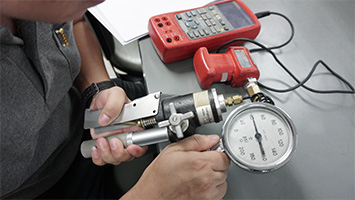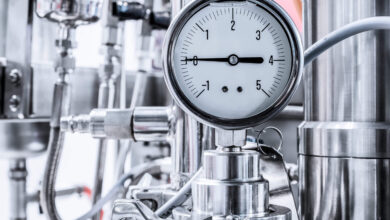Calibration: The Foundation of Accurate Measurement in Metrology

Calibration is a critical process in metrology, ensuring that instruments and devices used for measurement provide accurate and reliable results. Metrology, the science of measurement, is essential for various industries, including manufacturing, healthcare, engineering, and scientific research. In this context, calibration is a procedure used to compare an instrument’s measurements against a known standard, determining any deviations and making necessary adjustments to ensure precision. In this article, we’ll explore the concept of calibration, its importance, its processes, and how it underpins the accuracy and reliability of measurements in various fields.
What is Calibration?
Calibration is the process of comparing the readings of an instrument or sensor to a reference or known value, known as a standard, under specific conditions. This comparison helps identify any discrepancies between the instrument’s measurements and the true or accepted values. These discrepancies, if present, can then be corrected by adjusting the instrument or applying a correction factor to future measurements.
For example, a thermometer used in a laboratory may drift over time due to factors like aging or environmental changes. Calibration of the thermometer would involve comparing its readings to a reference temperature source, such as a temperature bath or another certified thermometer, to determine if there are deviations. If the thermometer consistently reads a degree higher than the actual temperature, this deviation can either be corrected by adjusting the thermometer or accounted for in future measurements.
Importance of Calibration
The importance of calibration cannot be overstated, particularly in industries where precision is paramount. The accuracy of measurements impacts product quality, safety, efficiency, and compliance with regulations. Here are a few reasons why calibration is crucial:
- Accuracy and Precision: Regular calibration ensures that measurement tools maintain accuracy over time, which is vital for industries like aerospace, pharmaceuticals, and automotive manufacturing, where even small measurement errors can lead to catastrophic consequences.
- Regulatory Compliance: Many industries operate under strict regulations and standards (such as ISO 9001 or FDA guidelines) that require regular calibration of equipment. Failing to meet these standards can result in penalties, recalls, or loss of certification.
- Product Quality: Consistent calibration guarantees that products are manufactured to the correct specifications, reducing the risk of defects and ensuring customer satisfaction. This is particularly important in industries like electronics and precision engineering, where component sizes and tolerances need to be exact.
- Cost Efficiency: By identifying measurement errors early, calibration can prevent costly production errors, rework, or the rejection of defective products. It also helps avoid expensive downtime due to faulty instruments or incorrect measurements.
- Safety: In critical fields such as healthcare, aviation, and nuclear energy, accurate measurements are essential to ensure safety. For example, in medical laboratories, calibrated equipment ensures that patient diagnostics are based on accurate data, which is crucial for proper treatment decisions.
The Calibration Process
Calibration typically involves the following steps:
- Selection of a Standard: The first step in calibration is choosing a reference standard with a known and accurate value. These standards are typically traceable to national or international standards maintained by organizations such as the National Institute of Standards and Technology (NIST) or the International Bureau of Weights and Measures (BIPM). Traceability ensures that the reference standard is reliable and can be used as a basis for comparing measurements.
- Performing the Comparison: The instrument being calibrated is then tested under controlled conditions and compared to the standard. This might involve measuring the same quantity (e.g., voltage, temperature, mass) with both the instrument and the reference standard to detect any deviations.
- Documenting Results: The deviations or differences between the instrument’s readings and the standard are documented. These differences are often expressed in terms of “calibration uncertainty,” which defines the possible range of error in the instrument’s measurements.
- Adjustments and Corrections: If deviations are found, the instrument may be adjusted to bring its readings in line with the standard. In cases where physical adjustments are not possible, a correction factor may be applied to the instrument’s future measurements to account for the error.
- Certification: After calibration, the instrument is typically issued a calibration certificate. This document provides evidence of the calibration, detailing the date, conditions, reference standard used, and the results of the comparison. Calibration certificates are often required for regulatory compliance and quality assurance purposes.
Types of Calibration
Calibration can be applied to a wide variety of instruments, depending on the type of measurements being made. Some common types of calibration include:
- Temperature Calibration: Instruments like thermometers, thermocouples, and temperature sensors are calibrated using reference temperature sources, such as ice baths or temperature calibration furnaces.
- Electrical Calibration: Devices that measure electrical quantities, such as multimeters, oscilloscopes, and signal generators, are calibrated using voltage or current standards.
- Pressure Calibration: Pressure gauges, transducers, and barometers are calibrated by comparing them to known pressure standards, often using pressure calibrators or deadweight testers.
- Mass and Weight Calibration: Scales and balances are calibrated using certified weights to ensure accurate mass measurements.
- Dimensional Calibration: Instruments like calipers, micrometers, and gauges are calibrated by comparing them to precision length standards, such as gauge blocks.
Challenges and Best Practices
Despite the importance of calibration, challenges such as environmental conditions, instrument drift, and human error can affect the process. To ensure successful calibration, best practices include regular maintenance, environmental control, and proper training for personnel. Calibration intervals should be established based on the criticality of the instrument, its frequency of use, and the consequences of measurement errors.
Conclusion
In conclusion, calibration is a vital process that ensures the accuracy, precision, and reliability of measurement instruments. It plays a central role in industries ranging from manufacturing and healthcare to scientific research and engineering. Regular calibration not only ensures regulatory compliance but also enhances product quality, reduces costs, and ensures safety in critical applications. As technology advances and the demand for precise measurements grows, the importance of calibration will only continue to increase, solidifying its role as the foundation of accurate measurement in metrology.



